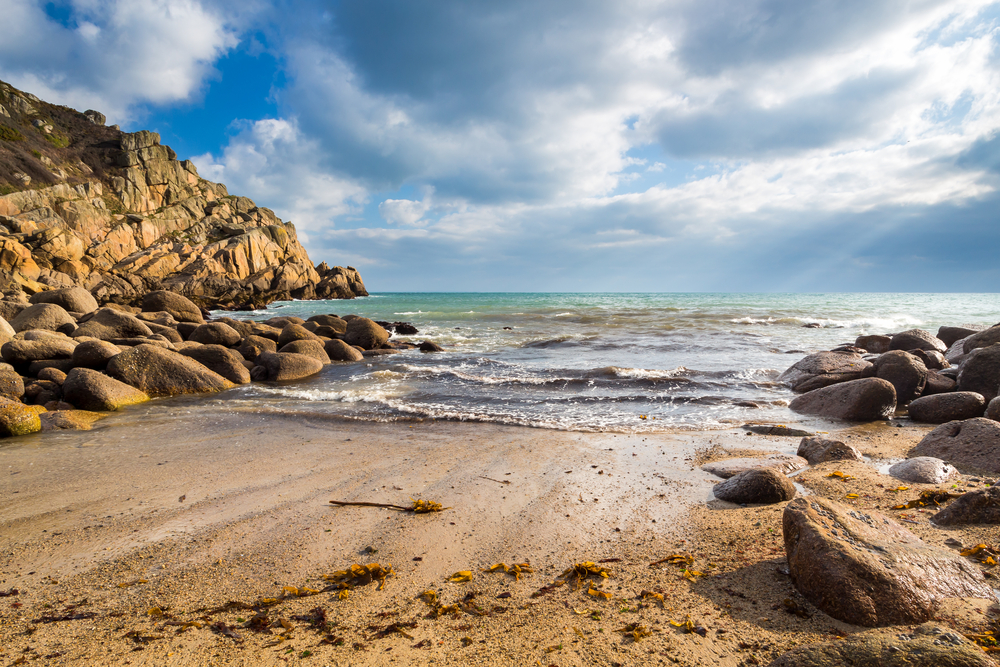Penberth Cove lies close to Land’s End on the wild furthest tip of Cornwall. This picturesque cove huddles in a steep wooded valley on this rocky stretch of coast between Mousehole and Treen and it probably best known for appearing in several episodes of the popular TV drama ‘Poldark’.
But this cove has a long tradition of fishing, as the many interesting relics of the industry that can be found in the cove will attest.
Exploring Penberth Cove
Arriving at Penberth on foot, from either direction along the coastal path, feels as if you have just turned a corner and somehow stepped back in time by a few hundred years. The path tumbles down into a narrow valley where a fast-flowing stream, forded by stepping stones, gushes over rocks into the sea. The picture-perfect granite cottages, some of them thatched, were once the sturdy homes of the sea-farers who lived and worked here, while the low buildings nearby, a little further up the valley, were once used for processing and packing pilchards, ready to be sent overseas.
First settled in mid 1600’s
The little cove was first settled in the mid-1600s and in the 19th century visiting writers described a scene of organised chaos with paved granite slipway and surroundings littered with nets, crab-pots, floats, boats, plus the odd wandering chicken and cow. A lively and industrious place.
J. T. Blight wrote about the view in 1861:
Penberth Cove, where there are a few fishermen’s cottages; the boats, except when in use, are drawn up the landing place, which is paved with large stones and fastened to iron rings in the rocks. Old pieces of wreck, crab-pots, oars, masts, net and miscellaneous debris are plentifully scattered around.
Things may be a little quieter, more sedate, these days but there are still a couple of resident fishing boats on the slipway and close by one very unusual historic monument to admire – the 18th century capstan or windlass.
This wooden contraption, a huge wheel with 18 giant spokes, sits on a piece of flat ground just above the slipway and was once used to winch the fishing boats to safety up the steep slope. The capstan was in use for at least 200 years before being replaced by an electric winch in the 1960s, it is now a rather unique scheduled monument.
Penberth Cove was donated to the National Trust
The whole cove was given to the National Trust in 1957 by a local landowner “in memory of those who died in World War II” and sobering thought as you gaze on this picture-perfect Cornish scene.
But if you can tear yourself away from the peace of this cove, just a short walk further south and you will come to the wonderful Treryn Dinas headland with its famous Logan Rock and then a little further on the heavenly beach of Porthcurno.
